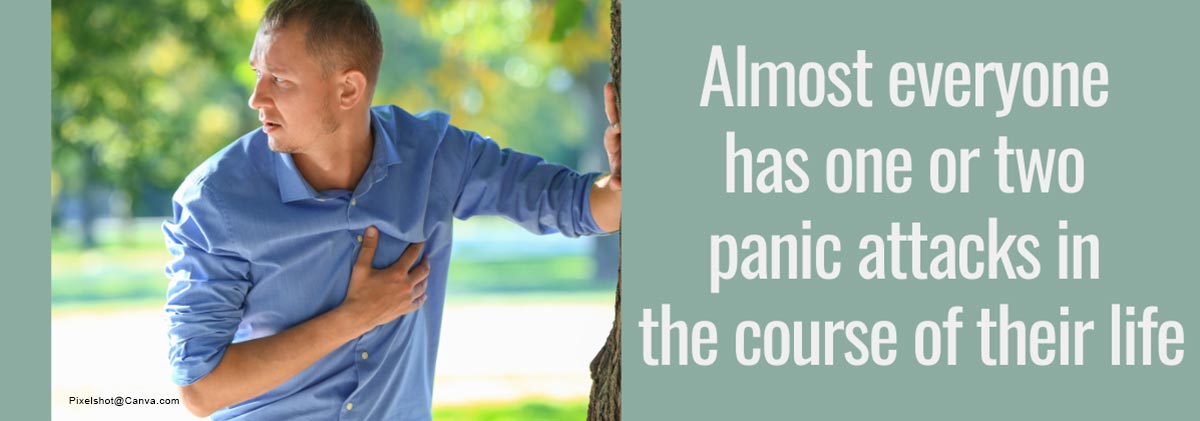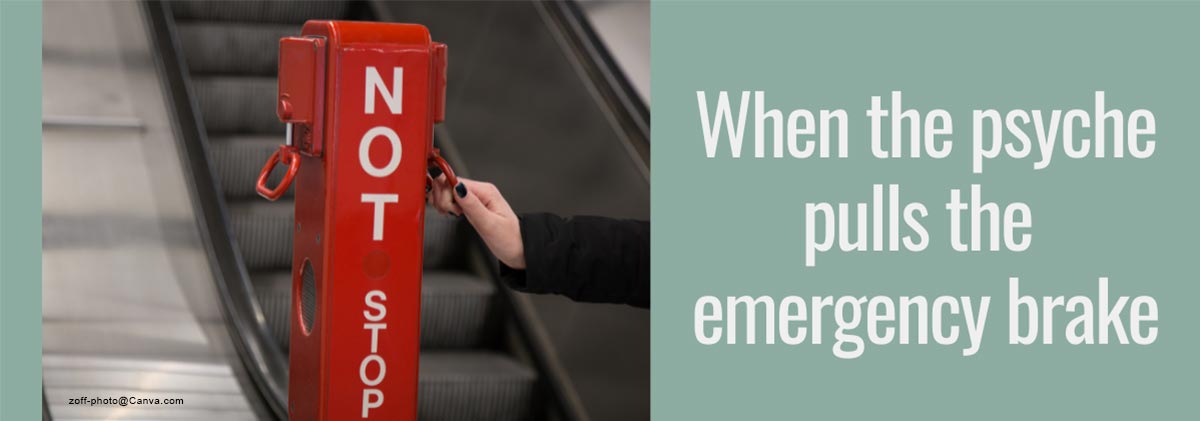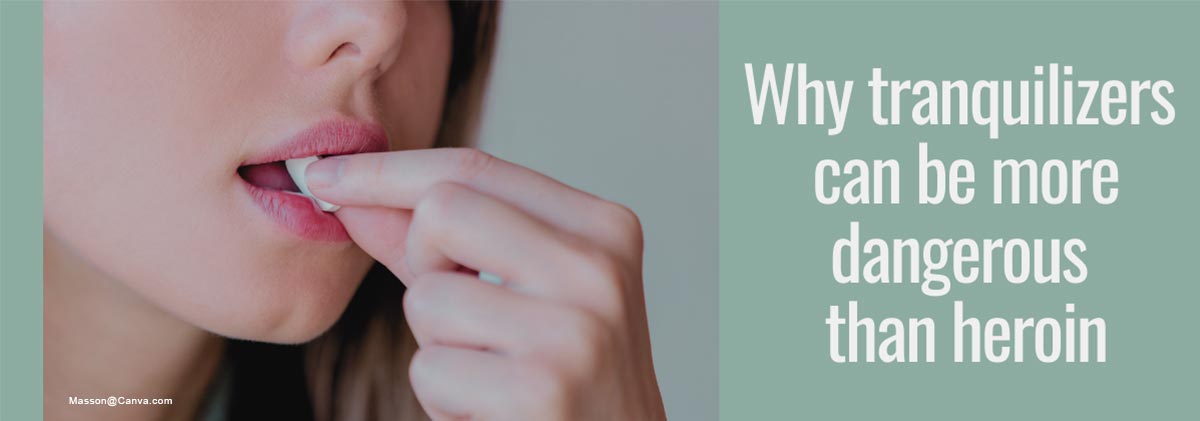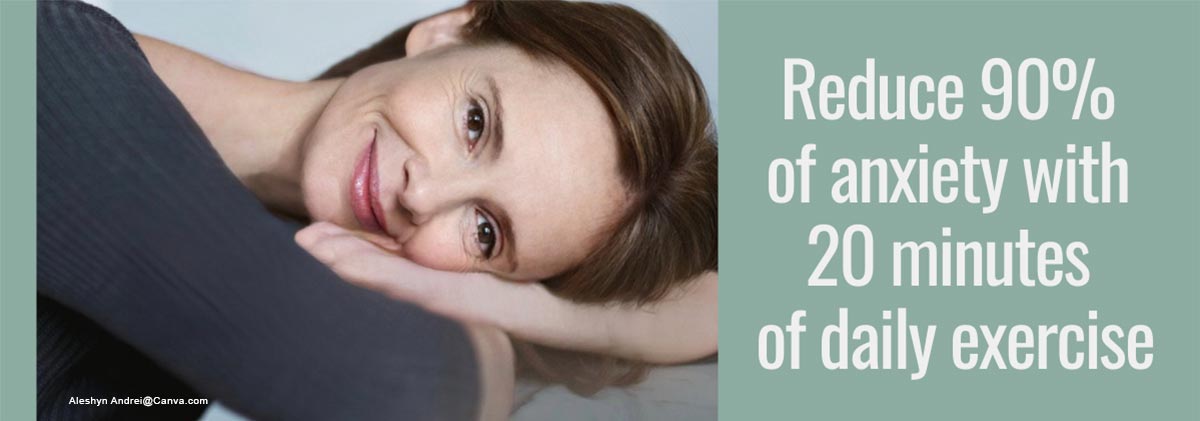
Get rid of panic attacks quickly and permanently
Even if many sufferers can hardly imagine this in their distress: They are not helplessly at the mercy of panic attacks. For the past 5 years, there has been a therapy that has shown above-average success in treating panic attacks. This blog article from the Institute for Modern Psychotherapy in Berlin deals with the therapy and what anxiety patients should pay attention to in order not to suffer unnecessarily from anxiety and panic for a long time.
Panic attacks, the worst of all anxiety disorders
In the United States, more than 40 million people suffer from an anxiety disorder. Many of them are plagued by recurring panic attacks. But what is actually the difference between a panic attack and other severe anxiety? Put simply, people who suffer from a panic attack are acutely afraid of death. Symptoms such as racing heart, dizziness, nausea, hot flashes or tingling in the arms and legs occur suddenly and with such intensity that those affected feel as if they would die at any moment.
How panic attacks really occur
Almost everyone has one or even two panic attacks in the course of their life. One possible reason is a short-term hyperthyroidism. But also a nutritional vitamin B12 deficiency, an allergic reaction to an antibiotic or the consumption of psychoactive substances can trigger panic attacks. And, of course, the same applies to shocking news or traumatic experiences. However, all these reasons only cause isolated panic attacks, not panic disorder.
A real anxiety disorder is only caused by the permanent brooding after the anxiety attack. Yes, you read correctly! It is not the panic attack itself, but the subsequent ruminating about whether one is now seriously ill and whether something is wrong in the heart or in the head that leads to a panic disorder.
Important :
It is the constant brooding about what is wrong with you that, over the course of weeks, networks the brain in such a way that a single panic attack becomes an anxiety disorder with recurring anxiety attacks.
The two most common triggers of panic attacks
Even if many can hardly imagine it: Permanent negative rumination is one of the two most common triggers of panic attacks. However, if a certain way of thinking can lead to healthy people becoming anxiety patients, then there must also be a way of thinking that makes these people healthy again. And it is exactly this better way of thinking that can be learned, for example, during a Solution Focused Therapy (SFT) or with the help of our new online video course “The Anxiety Cure”.
But there is also another reason why one is suddenly afflicted by panic attacks. Even if it is hard to believe: panic attacks are often nothing more than a labor of love by the psyche. What exactly lies behind this phenomenon and why sufferers can recover amazingly quickly in this particular case is the subject of the next paragraph.

Panic attacks are often just a labor of love by your psyche
There are people who act against their better judgment for years. Some talk themselves into a relationship that has long since mutated into a nightmare. Others persist in professional situations in which they are bullied or visit a grumpy parent week after week without ever getting any thanks. For a while, you can easily endure such stressful situations, but at some point your psyche pulls the emergency brake.
It’s a fact that:
When people go against their healthy gut instincts for too long, the subconscious finds ways to indicate that a certain behavior is harmful in the long run.
It usually starts with psychosomatic complaints, such as heart palpitations for no reason, stomach problems, diarrhea, insomnia or even small tics, such as a twitching eyelid. If these warnings from the psyche continue to be ignored, however, the subconscious will also bring in heavier weapons if necessary.
If a panic attack occurs now, however, it is not a malfunction of the brain. On the contrary, it is then rather a labor of love of the psyche, which wants to remind you emphatically that a certain behavior must be changed urgently, so that you do not suffer permanent damage.
You may find it hard to imagine, but at the Institute for Modern Psychotherapy we see panic attacks disappear on their own every day just because someone had the courage to end a bad relationship, get a better job, or arrange for an outside caregiver for a sick parent.
Therefore our tip:
For recurring panic attacks, ask yourself where in your life you may not have listened to your healthy gut for a while.
And if you currently have no idea what exactly this gut feeling wants to tell you, then we recommend our online video course “The Anxiety Cure!” In it, we go through all areas of life that come into question for this with you step by step. With this, you will definitely find out what your psyche is trying to tell you with the help of panic attacks or even other anxiety disorders. As soon as this is clarified, it usually becomes much easier to take the decisive step towards health.
What treatment options are there?
In the United States, two main options are offered for the treatment of panic disorder. The first is pharmacotherapy, i.e. treatment with drugs in the form of antidepressants and strong tranquilizers, so-called benzodiazepines. And secondly, psychotherapeutic sessions, for example as part of cognitive behavioral therapy.
In addition, however, there are other, in some cases even more efficient, therapeutic methods, which, however, have only been gaining in popularity for a few years. These include, for example:
- Solution-Focused Therapy (SFT) according to Steve de Shazer
- Acceptance Commitment Therapy according to Steven C. Hayes (ACT)
- Hypnotherapy according to Milton H. Erickson
- and the Bernhardt Method according to Klaus Bernhardt
Among the presented forms of therapy, the Bernhardt Method stands out due to a few special features. It does not stubbornly follow a particular school of therapy, but combines the latest findings of brain research with the best of cognitive behavioral therapy, systemic therapy, hypnotherapy, ACT and solution-oriented short-term therapy. In addition, it does not require any medication at all and is also well suited for self-therapy.

Benzodiazepines and antidepressants for panic attacks
Benzodiazepines
Many anxiety patients refer to them as their last resort. Benzodiazepines are strong sedatives that act very quickly and usually ensure that the anxiety subsides quickly.
However, these drugs are anything but harmless. Anyone who resorts to them on a daily basis can expect to become physically dependent after just 14 days. How extreme this dependence can be, and even more so the withdrawal from benzodiazepines, has long been known among doctors and therapists. The general public, on the other hand, has only been made aware of this issue for a few years.
Important:
In the case of panic attacks, benzodiazepines should only be taken in absolutely exceptional cases. Taking them for several days or even weeks should be avoided at all costs to avoid becoming dangerously dependent. If a dependency already exists, the medication must never be stopped abruptly, but must be reduced slowly under medical supervision.
Antidepressants
The treatment of panic attacks with antidepressants is increasingly falling into disrepute. Because, according to current studies, the effectiveness is not in reasonable proportion to the possible side effects. In one of the most renowned German journals for psychotherapists, one could already read in 2018:
“For mild, moderate, and not too severe depression, antidepressants on average have no greater effects than placebos. The chance that you will get better with these drugs is only about 14%. So you need to consider whether this small chance of improvement justifies the side effects that often occur from taking them.”
According to current knowledge, antidepressants are not even particularly effective against their namesakes, depression. Their use against anxiety disorders is therefore even more questionable. Especially when one considers that an efficacy of 14% means, conversely, that 86% of all sufferers do NOT benefit from the medication, but must expect further problems due to the side effects. In addition, when discontinuing antidepressants, sometimes significant problems (discontinuation syndromes) occur, which also speaks against the use in panic attacks.
Last but not least, you should keep in mind that neither antidepressants nor benzodiazepines change anything about HOW anxiety and panic are structurally anchored in the brain. Only the appropriate form of psychotherapy can bring lasting success here.
Good to know:
Psychotropic drugs at best alleviate the symptoms of an anxiety disorder, but the actual causes remain untreated. Those who delay a necessary psychotherapy with medication risk that the anxiety disorder lasts much longer than necessary.
Which form of psychotherapy helps best?
The good news at the outset is that you can successfully combat panic attacks with almost all forms of psychotherapy. Which one is best for you personally depends primarily on whether you want to take psychotropic drugs to accompany the therapy and how quickly you want to leave the anxiety behind.
If you can’t do it fast enough and would also like to avoid medication, you should take a closer look at the Bernhardt Method. In recent years, this method has been used to achieve surprisingly rapid success even in the case of severe anxiety disorders.
Another advantage of the Bernhardt Method is that it is also well suited for self-therapy. Instead of waiting longer for a free therapy place, you can start immediately and actively do something against anxiety and panic. With the help of an inexpensive online video course developed especially for anxiety patients, you will learn a number of highly efficient mental techniques that have already helped many anxiety patients regain a beautiful and anxiety-free life. By the way: All 52 videos of “Finally anxiety-free!” are designed in such a way that you don’t have to fear any anxiety-inducing triggers while watching them.

Eliminate panic attacks with practice
While many anxiety patients still have to numb themselves only with medication or painfully learn to somehow endure fearful situations through permanent confrontation with the fear, the Bernhardt Method takes a completely new approach. Through it, people with panic disorder can find out which neurobiological triggers are actually responsible for the anxiety attacks. They then learn simple mental techniques that can be used to quickly and, with a little patience, even permanently stop the anxiety thoughts that automatically run in the brain.
Since these mental techniques are also excellent for self-therapy, sufferers save themselves valuable life time. Because instead of going to therapy only once a week or waiting months for a therapy place, these techniques can be applied daily. Just 20 minutes of training a day can reduce the perceived anxiety by up to 90% within a few days. But how are such rapid successes possible at all, when many psychiatrists still claim that the treatment of anxiety disorders is long and difficult. Brain research provides the answer.
Recurrent panic attacks: Often the result of a misconnected brain
What sounds very technical at first glance turns out to be quite logical on closer inspection. The human brain stores all experience in the form of synaptic connections and builds automated processes from repeated thoughts and actions.
The underlying principle is called neuroplasticity and how it works can be explained well using the example of “brushing teeth”. No adult has to consciously think about whether they have really brushed all their teeth. We clean every single tooth completely automatically, while our thoughts are usually somewhere else. The corresponding movement sequences are stored neuronally in such a way that they run fully automatically. And it is the same when fearful and worrying thinking is repeated so often that a one-time panic attack develops into a real anxiety disorder.
Good to know:
Anxiety disorders are based on automatically running chains of thoughts. Since anxiety and panic are demonstrably neuronally “automated”, it must also be possible to neuronally automate ease and composure. And this is exactly what the Bernhardt Method achieves, making it in part clearly superior to older therapy methods.
How to escape the vicious circle of anxiety permanently
Adherents of confrontation therapy assume that you only have to face your fears often enough until they gradually disappear more and more. But unfortunately, the reality is often different. In reality, one usually only learns to evaluate the fear, which is still there, differently and thus to bear it better.
Wouldn’t it be much better to really stop feeling anxious in situations that are quite obviously harmless? After all, what good is it to know that all the physical symptoms such as rapid heartbeat, shortness of breath, dizziness, feelings of fainting or the lump in your throat are only psychosomatic if you nevertheless feel all these feelings to be completely real?
So there is only one way left: these real sensations must disappear. However, this is only possible if the neuronal connections through which all these feelings are triggered also disappear. And from the point of view of brain research, this can only be done if they are replaced by other connections in which exactly the opposite is stored, i.e. lightness, serenity and joy.

Anxiety patients do not lack courage or resilience. The only thing that is missing is the imagination that situations that are currently anxiety-ridden can also be experienced again completely free of anxiety. Effective training of this positive imagination is an essential part of any successful anxiety therapy.
By the way, it is easy to find out whether the therapy you might be doing is the right one: If you feel significantly better after a short time as a result of the therapeutic sessions, then you have chosen exactly the right path. Because only when the brain is neuronally “programmed” again for lightness and joy can panic attacks and also the accompanying avoidance behavior disappear permanently.
Whether you go to a clinic, get help from a therapist, or work intensively with our online video course is not the decisive factor. It is much more important that you rewire your brain and consistently make sure that your gray matter only gets “good food”.